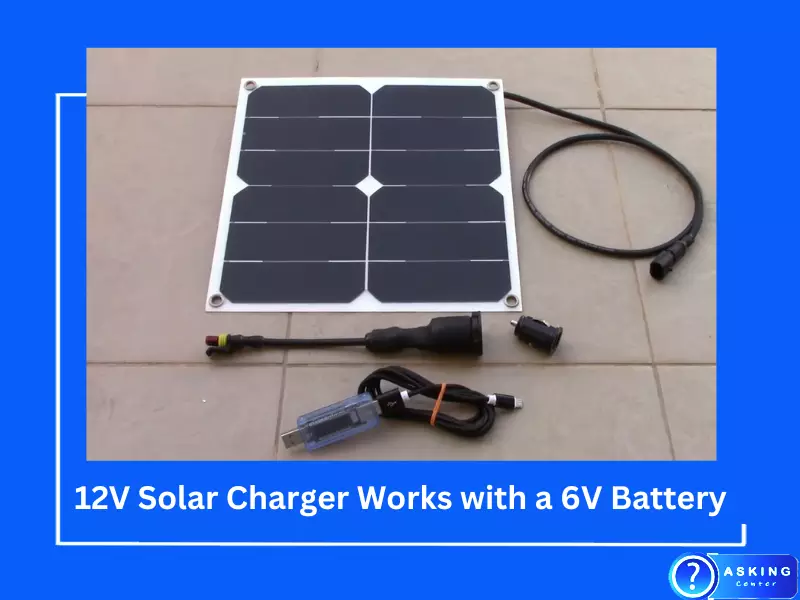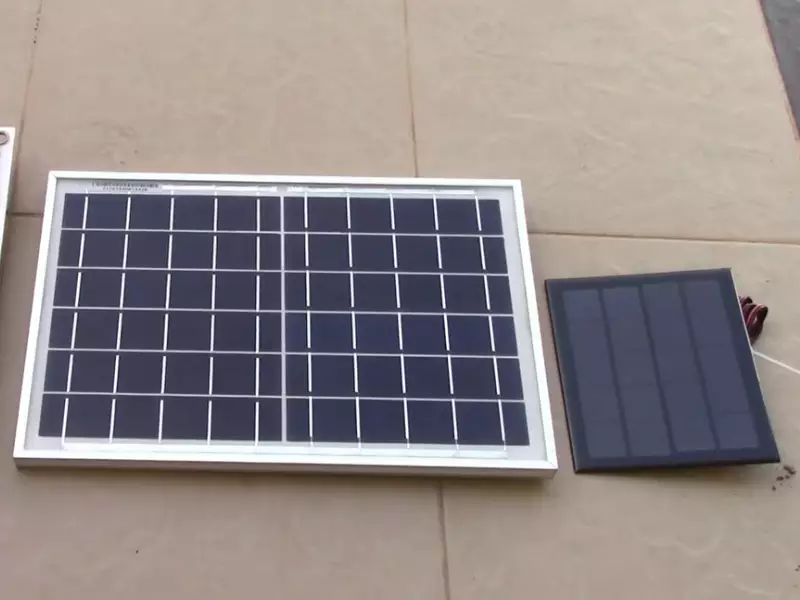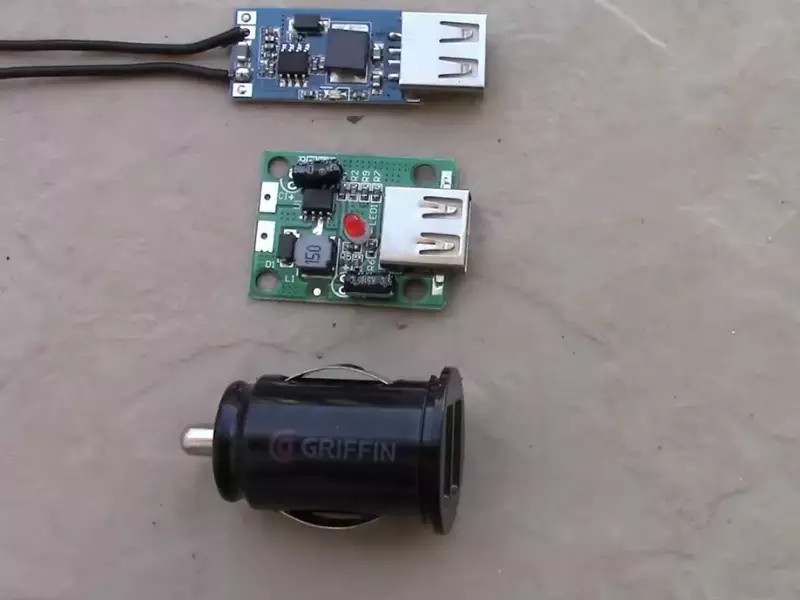Solar chargers have rapidly emerged as a sustainable energy solution, transforming how devices and batteries get their power. Among the diverse range of solar chargers available in the market, two prominent voltage variants stand out: 6V and 12V. Their prevalence has often led to questions on compatibility, especially when it comes to mismatching chargers and batteries.
Yes, a 12V solar charger can technically charge a 6V battery. However, this setup isn’t straightforward and can lead to potential risks like overcharging, reduced battery lifespan, and even safety hazards. It’s crucial to approach this combination with a clear understanding of its implications.
The world of solar power, with its vast array of configurations, offers innovative ways to address energy needs. In specific scenarios, using a 12V solar charger with a 6V battery might appear tempting. Still, comprehending the nuances of such a decision is essential to ensure both efficient energy use and safety.
Solar Charger Basics
What is a Solar Charger?
A solar charger taps into the sun’s energy, harnessing its power to generate electricity. In its most basic form, a solar charger comprises solar panels that absorb sunlight and convert it into electrical energy. This energy is then used to recharge batteries or directly power devices. Given their green credentials, these chargers are pivotal in efforts toward sustainable energy solutions.
Types Based on Voltage
Solar chargers come in various sizes and capacities. One primary distinction is their voltage output. Two common variants are:
- 6V Solar Charger: Often used for smaller devices, such as garden lights or smaller battery-operated gadgets.
- 12V Solar Charger: This version is more robust, suitable for charging car batteries, RVs, and larger electronics.

Charger-Battery Compatibility
Solar chargers and batteries need harmony for optimal performance. When pairing, consider:
- Voltage Matching: It’s vital to ensure that the charger’s voltage output aligns with the battery’s voltage requirements. This ensures efficient charging and prolongs battery life.
Significance of Matching Voltages
Pairing a charger with the correct battery voltage isn’t just about ensuring that the battery charges. It’s about safety and longevity. Batteries receiving the right voltage operate efficiently, ensuring longer lifespan and reduced wear.
Implications of Misalignment
Misaligning voltages can lead to:
- Overcharging: When a battery receives more voltage than it’s designed for, it can become overcharged, risking battery health and safety.
- Undercharging: Conversely, if the charger’s voltage is too low, the battery might not get fully charged, reducing its potential utility.
12V Solar Charger Insights
Typical Uses and Devices
The 12V solar charger is a versatile piece of equipment. Predominantly, it finds its use in:
- Vehicles: From cars to boats and RVs, these chargers ensure that your vehicle’s battery remains juiced up.
- Home Appliances: In off-grid situations, a 12V charger can help power certain home devices.
Standard Operational Parameters
When operating a 12V solar charger, it’s crucial to note:
- Optimal Sunlight: For best results, position the charger where it can receive direct sunlight for the most extended period.
- Charge Duration: Depending on the battery’s capacity and the charger’s efficiency, it might take several hours for a full charge.
6V Battery Overview
Typical Uses and Applications
A 6V battery is a popular choice for many devices due to its compact size and efficient output. Common applications include:
- Toys: Many children’s toys rely on 6V batteries for operation.
- Garden Lights: Outdoor lights, especially those with sensors, often use 6V batteries.
Key Characteristics
A 6V battery might be smaller than its 12V counterpart, but it has distinct features:
- Compact Size: Makes it an ideal choice for devices requiring portability.
- Reliable Output: Despite its size, a 6V battery can power a device efficiently for extended periods, provided it’s used appropriately.

Can You Use a 12V Solar Charger on a 6V Battery?
Theoretically, a 12V solar charger can be used with a 6V battery, but it’s not recommended due to the risk of overcharging. Overcharging can degrade the battery’s health, leading to a shorter lifespan or even causing a dangerous situation such as thermal runaway.
What Happens If You Use a 12V Charger on a 6V Battery?
Possible Scenarios
Using a 12V charger on a 6V battery is akin to filling a small cup with a large jug – it’s easy to overflow. The battery may heat up excessively, damaging its internal structure and possibly leading to swelling or leakage. In severe cases, it can cause a dangerous phenomenon known as thermal runaway.
Implications for Battery Health
Long-term overcharging can significantly reduce a battery’s lifespan. The excessive heat produced can break down the internal components of the battery, leading to decreased performance and eventual failure.
What is Thermal Runaway?
Thermal runaway is a situation where an increase in temperature changes the conditions in a way that causes a further increase in temperature, often leading to a destructive result. In batteries, this can occur when the battery is overcharged or short-circuited.
Preventing thermal runaway primarily involves ensuring proper charging practices. This means using a charger with a voltage compatible with the battery and monitoring the battery’s temperature during charging.
Charging a 6V Battery with a Lower Voltage Charger
Using a lower voltage charger, like a 5V charger, with a 6V battery is possible but not ideal. The primary concern lies in the efficiency and the potential for undercharging.
Feasibility of Using a Lower Voltage Charger
A lower voltage charger can power a 6V battery, but it will likely be unable to fully charge the battery. This is due to the lower voltage failing to provide the necessary electrical potential difference that facilitates the movement of electric charge, which is essential for charging.
Undercharging and Its Effects
Undercharging occurs when a battery is frequently charged to less than its capacity. This results in sulfation, where hard lead sulfate crystals form in the battery, reducing its capacity and efficiency. Continuous undercharging can lead to premature battery failure.
Real-life Examples
Consider a scenario where you’re using a USB port (typically 5V) to charge a 6V battery. Although the battery may receive some charge, the charging process will be slow, and the battery may never reach full charge.

What Is the Voltage Required to Charge 6V Batteries?
The ideal voltage to charge a 6V battery isn’t exactly 6V. For effective and efficient charging, a slightly higher voltage is required.
Ideal Charging Voltage for 6V Batteries
The ideal charger for a 6V battery should provide an output between 6.8V to 7.2V. This bit of overvoltage allows the charger to overcome the battery’s internal resistance, ensuring that it can reach its full capacity during charging.
Voltage, Current, and Charging Time
Voltage can be thought of as the “pressure” pushing the electric charge, while current is the rate of flow of the electric charge. A higher charging voltage results in a higher current, meaning the battery charges faster. But exceeding the recommended charging voltage can lead to overcharging, which is damaging to the battery.
The Ideal Solar Panel for Charging 6V Batteries
Choosing the right solar panel for charging 6V batteries requires careful consideration of both power output and voltage compatibility.
Solar Panel Specifications
For a 6V battery, a solar panel that can deliver an output between 6.8V to 7.2V under peak sunlight conditions would be ideal. Additionally, the panel should provide sufficient current to charge the battery within a reasonable time.
Choosing the Right Solar Panel
The best solar panel for charging a 6V battery would also depend on other factors such as your geographical location, local weather conditions, and the panel’s intended placement. For instance, if you’re in an area with fewer sunlight hours, you might need a solar panel with higher efficiency or larger surface area.
Why Is My 6V Battery Not Charging with a 6V Solar Panel?
Several issues could prevent a 6V battery from charging properly with a 6V solar panel.
Solar Panel Issues
If the solar panel isn’t producing sufficient voltage (around 6.8 to 7.2V) or current, it might not charge the battery effectively. This could be due to the panel’s inefficiency, dust or dirt on the panel’s surface, or inadequate sunlight exposure.
Battery Issues
If the battery itself is faulty (e.g., due to aging, damage, or heavy sulfation), it might not accept charge, regardless of the solar panel’s performance.
Charging Circuit Issues
Problems with the charging circuit, such as a malfunctioning charge controller, broken wires, or poor connections, can also prevent the battery from charging. It’s advisable to seek professional help if you’re unable to diagnose or resolve these issues yourself.
FAQs
Why is voltage compatibility important?
What happens if a 6V battery is overcharged?
Are there devices to regulate voltage mismatch?
Conclusion
The realm of solar energy is both promising and intricate. While it offers a plethora of solutions, each choice must be made with thorough knowledge and understanding. Pairing a 12V solar charger with a 6V battery is one such decision, loaded with both potential and challenges.
For users, it’s imperative to comprehend that while technically possible, this mismatch demands careful handling. Without proper measures or equipment, the implications range from a diminished battery life to considerable safety concerns.
In summary, as we increasingly lean on sustainable energy solutions, our choices must be backed by informed decisions. Solar power, while transformative, is no exception. Making sure we match equipment correctly, or understand the risks of mismatches, paves the way for a safer, greener future.
